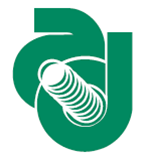Speaker
Dr
Luca Gironi
(MIB)
Description
Among the detectors used for rare event searches, bolometers are very promising because of their favourable properties. However, up to now, the possibility to identify the interacting particle, and thus to greatly reduce the background, can be fulfilled only with a double read-out (e.g. heat and scintillation light). This double read-out could greatly complicate the assembly of a huge, multi-detector array. The possibility to recognize the interacting particle through the shape of the thermal pulse is then clearly a very interesting opportunity.
Detailed analyses of the signal time development in macro-bolometers built with scintillating crystals showed that it is possible to distinguish between $\beta$/$\gamma$ and $\alpha$ particle interaction (i.e. the main source of background for 0$\nu$DBD experiments based on the bolometric technique). Results of pulse shape analysis of signals from several bolometers with absorbers of different composition (CaMoO$_4$, ZnMoO$_4$, ZnSe, ...) are presented and the pulse shape discrimination capability of such detectors is discussed. An explanation of this behaviour, based on the energy partition in the heat and scintillation channels, is also presented.
Author
Dr
Luca Gironi
(MIB)

